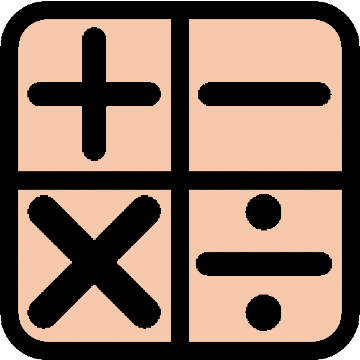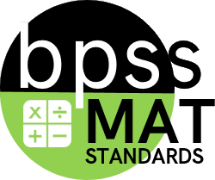MAT-05.NO.NBT.05

|
5th Grade (MAT) Targeted Standard
(NO) Number and Operations
(NBT) Number Based Ten
Learners will understand the place value structure of the base-ten number system and represent, compare, and perform operations with multi-digit whole numbers and decimals.
|
MAT-05.NO.NBT.05 Use concrete models, drawings, place value strategies, properties of operations and/or relationships to add, subtract, and multiply decimals to hundredths.*
 Proficiency Scale Proficiency Scale
Progressions
Addition and Subtraction
- MAT-01.NO.NBT.03 Add within 100 using a two-digit number and a one-digit number. Use concrete models, drawings, and strategies that reflect an understanding of place value.
- MAT-02.NO.NBT.03 Add within 100 using place value strategies and/or the relationship between addition and subtraction.
- MAT-01.NO.NBT.04 Subtract multiples of 10 within 100 using concrete models, drawings, and strategies that reflect an understanding of place value.
- MAT-01.NO.NBT.05 Mentally add or subtract 10 to or from a given two-digit number and explain the reasoning used.
- MAT-02.NO.NBT.04 Subtract within 100 using place value strategies and/or the relationship between addition and subtraction.
- MAT-02.NO.NBT.05 Mentally add or subtract 10 or 100 to or from a given number between 100 and 900.
- MAT-03.NO.NBT.03 Add and subtract within 1000 using place value strategies, algorithms, and/or the relationship between addition and subtraction.
- MAT-04.NO.NBT.04 Add and subtract multi-digit whole numbers to the one million place using strategies flexibly, including the algorithm.
- MAT-05.NO.NBT.05 Use concrete models, drawings, place value strategies, properties of operations, and/or relationships to add, subtract, and multiply decimals to hundredths.
- MAT-07.NO.O.01 Add, subtract, multiply, and divide integers using visual models and properties of operations in multi-step authentic and mathematical problems, including authentic problems.
- MAT-07.NO.O.02 Add, subtract, multiply, and divide non-negative fractions in multi-step problems, including authentic problems.
- MAT-07.NO.O.03 Add, subtract, multiply, and divide non-negative decimals to the hundredth place in multi-step problems using strategies or procedures, including authentic problems.
- MAT-08.NO.O.02 Add, subtract, multiply, and divide rational numbers using strategies or procedures.
- MAT-09.NO.02 Perform basic operations on simple radical expressions to write a simplified equivalent expression.
- MAT-09.AR.11 Add, subtract, and multiply polynomials.
- MAT-12.NO.03 Demonstrate that the sum or product of two rational numbers is rational; that the sum of a rational number and an irrational number is irrational, and that the product of a nonzero rational number and an irrational number is irrational.
- MAT-12.AR.13 Add, subtract, and multiply polynomials beyond quadratics. Understand that polynomials form a system comparable to the integers, namely, they are closed under the operations of addition, subtraction, and multiplication.
- MAT-12.NO.11 Represent addition, subtraction, multiplication, conjugation, powers, and roots of complex numbers geometrically on the complex and/or polar plane; use properties of this representation for computation.
- MAT-12.NO.17 Add and subtract vectors. Represent vector subtraction graphically by connecting the tips of the appropriate order and using the components to perform vector subtraction.
- MAT-12.NO.19 Represent data in a matrix. Perform operations (i.e., addition, subtraction, multiplication) on matrices of appropriate dimensions to solve problems and in context. Know that matrix multiplication is not commutative.
Multiplication and Division
- MAT-03.NO.NBT.04 Multiply one-digit whole numbers by multiples of 10 within 100.
- MAT-04.NO.NBT.05 Multiply a whole number up to four digits by a one-digit whole number and multiply two two digit numbers. Show and justify the calculation using equations, rectangular arrays, and models.
- MAT-05.NO.NBT.04 Multiply multi-digit whole numbers using strategies flexibly, including the algorithm.
- MAT-05.NO.NBT.07 Explain patterns in the number of zeros of the product when multiplying a number by powers of 10. Explain patterns in the placement of the decimal point when a decimal is multiplied or divided by a power of 10. Use whole-number exponents to denote powers of 10.
- MAT-04.NO.NBT.06 Find whole-number quotients and remainders with up to four-digit dividends and one-digit divisors using place value strategies. Show and justify the calculation by using equations, rectangular arrays, and models.
- MAT-05.NO.NBT.05 Use concrete models, drawings, place value strategies, properties of operations, and/or relationships to add, subtract, and multiply decimals to hundredths.
- MAT-05.NO.NBT.06 Find whole-number quotients and remainders with up to four-digit dividends and two-digit divisors using place value strategies. Show and justify the calculation using equations, rectangular arrays, and/or area models.
- MAT-06.NO.O.01 Divide multi-digit whole numbers up to four-digit dividends and two-digit divisors using strategies or procedures.
- MAT-07.NO.O.01 Add, subtract, multiply, and divide integers and positive rational numbers using visual models and properties of operations in multi-step problems, including authentic problems.
- MAT-07.NO.O.02 Add, subtract, multiply, and divide non-negative fractions in multi-step problems, including authentic problems.
- MAT-07.NO.O.03 Add, subtract, multiply, and divide non-negative decimals to the hundredth place in multi-step problems using strategies or procedures, including authentic problems.
- MAT-08.NO.O.01 Evaluate mentally the square roots of perfect squares up to 225 and cube roots of perfect cubes up to 1000.
- MAT-08.NO.O.02 Add, subtract, multiply, and divide rational numbers using strategies or procedures.
- MAT-09.NO.02 Perform basic operations on radicals and simplify radicals to write equivalent expressions.
- MAT-09.AR.11 Add, subtract, and multiply polynomials.
- MAT-12.NO.03 Demonstrate that the sum or product of two rational numbers is rational, that the sum of a rational number and an irrational number is irrational, and that the product of a nonzero rational number and an irrational number is irrational.
- MAT-12.AR.13 Add, subtract, and multiply polynomials beyond quadratics. Understand that polynomials form a system comparable to the integers, namely, they are closed under the operations of addition, subtraction, and multiplication.
- MAT-12.NO.11 Represent addition, subtraction, multiplication, conjugation, powers, and roots of complex numbers geometrically on the complex and/or polar plane; use properties of this representation for computation.
- MAT-12.NO.19 Represent data in a matrix. Perform operations (i.e., addition, subtraction, multiplication) on matrices of appropriate dimensions to solve problems and in context. Know that matrix multiplication is not commutative.
|

